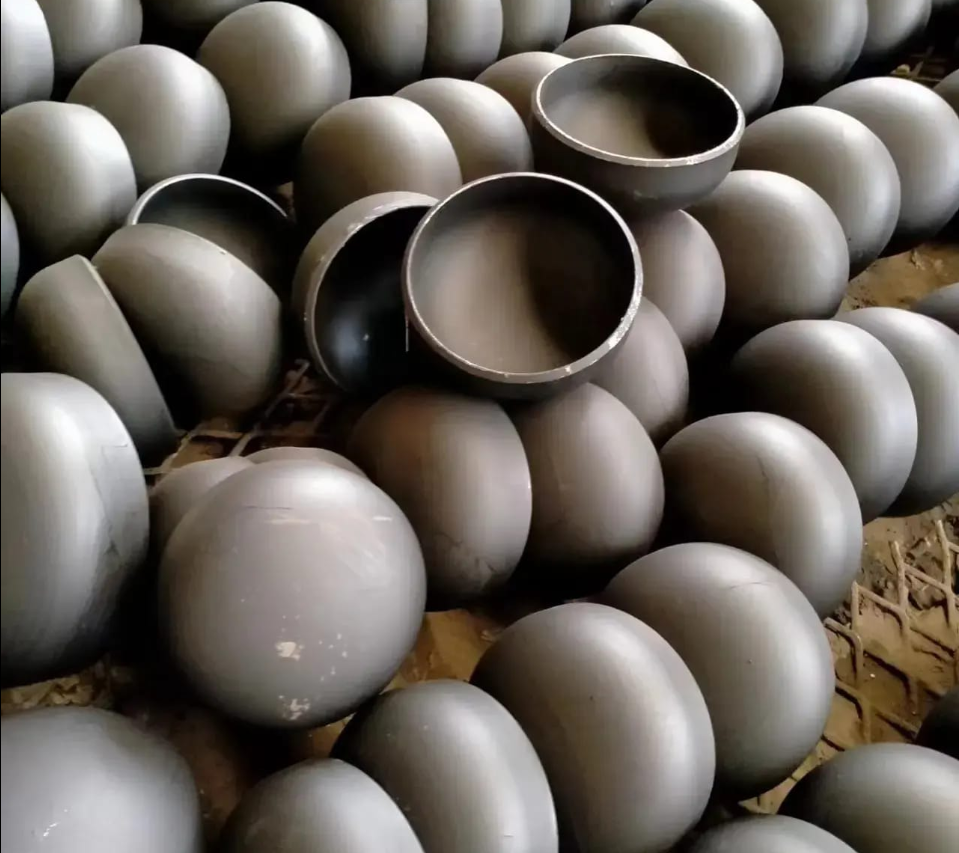-
Cangzhou Yulong Steel Co., Ltd.
-
Phone:
+86 13303177267 -
Email:
admin@ylsteelfittings.com
- English
- Arabic
- Italian
- Spanish
- Portuguese
- German
- kazakh
- Persian
- Greek
- French
- Russian
- Polish
- Thai
- Indonesian
- Vietnamese
- Zulu
- Korean
- Uzbek
- Hindi
- Serbian
- Malay
- Ukrainian
- Gujarati
- Haitian Creole
- hausa
- hawaiian
- Hebrew
- Miao
- Hungarian
- Icelandic
- igbo
- irish
- Japanese
- Javanese
- Kannada
- Khmer
- Rwandese
- Afrikaans
- Albanian
- Amharic
- Armenian
- Azerbaijani
- Basque
- Belarusian
- Bengali
- Bosnian
- Bulgarian
- Catalan
- Cebuano
- China
- China (Taiwan)
- Corsican
- Croatian
- Czech
- Danish
- Esperanto
- Estonian
- Finnish
- Frisian
- Galician
- Georgian
- Kurdish
- Kyrgyz
- Lao
- Latin
- Latvian
- Lithuanian
- Luxembourgish
- Macedonian
- Malgashi
- Malayalam
- Maltese
- Maori
- Marathi
- Mongolian
- Myanmar
- Nepali
- Norwegian
- Norwegian
- Occitan
- Pashto
- Dutch
- Punjabi
- Romanian
- Samoan
- Scottish Gaelic
- Sesotho
- Shona
- Sindhi
- Sinhala
- Slovak
- Slovenian
- Somali
- Sundanese
- Swahili
- Swedish
- Tagalog
- Tajik
- Tamil
- Tatar
- Telugu
- Turkish
- Turkmen
- Urdu
- Uighur
- Welsh
- Bantu
- Yiddish
- Yoruba

Oct . 14, 2024 23:58 Back to list
Similar Flange Types and Specifications for ANSI 150 Standards and Applications
Understanding ANSI 150 Flanges A Comprehensive Overview
Flanges play a critical role in fluid transport systems, serving as the connection points between pipes, valves, pumps, and other equipment. Among the various types of flanges, the ANSI 150 flange is a widely used component in many industrial applications. This article provides insights into ANSI 150 flanges, exploring their specifications, advantages, and applications in the industry.
What is an ANSI 150 Flange?
The term ANSI stands for the American National Standards Institute, which has established standards for various industrial components, including flanges. The 150 refers to the pressure class rating, indicating that this flange is designed to withstand a maximum pressure of 150 psi (pounds per square inch) at a specified temperature.
ANSI 150 flanges come in various materials, including carbon steel, stainless steel, and alloy steel. The choice of material often depends on the application requirements, such as corrosion resistance, temperature tolerance, and mechanical strength. The most common material for ANSI 150 flanges is carbon steel, formulated to meet specific engineering standards.
Specifications and Dimensions
ANSI 150 flanges are typically manufactured in accordance with ASME B16.5, which outlines the dimensions and tolerances for flanges used in pipe systems. The standard dimensions for ANSI 150 flanges are defined by their nominal pipe sizes, which range from ½ inch to 24 inches in diameter. Each flange type, whether flat-faced, raised-faced, or ring-type joint, has specific dimensional criteria that need to be met.
In addition to diameter, flanges also feature bolt holes. The number and spacing of these holes are crucial for secure connections. ANSI 150 flanges generally have a standardized bolt pattern, allowing for compatibility with other flanges and minimizing installation errors.
Advantages of ANSI 150 Flanges
flange 4 ansi 150

1. Ease of Installation ANSI 150 flanges are designed with standardized dimensions, making them easy to install. This uniformity ensures that they can be seamlessly integrated into various piping systems, reducing installation time and costs.
2. Reliability and Durability Constructed from robust materials, ANSI 150 flanges are engineered to withstand high pressures and temperatures. Their durability ensures long-term performance, reducing maintenance needs and operational downtimes.
3. Versatility ANSI 150 flanges can be used in numerous applications, including oil and gas, water treatment, chemical processing, and power generation. Their adaptability makes them a preferred choice among engineers and designers.
Applications of ANSI 150 Flanges
ANSI 150 flanges are found in a variety of industries. In the oil and gas sector, they are utilized in pipelines for transporting crude oil and natural gas. Their reliability is essential in ensuring the safety and integrity of these systems. In the water treatment industry, ANSI 150 flanges facilitate the connection of treatment equipment and piping, helping to maintain the efficiency of processes.
Moreover, they are common in HVAC systems, where they connect various components such as chillers, pumps, and heat exchangers. The ability of ANSI 150 flanges to handle varying pressures makes them suitable for both low and high-pressure systems.
Conclusion
In summary, ANSI 150 flanges are integral components in many industrial processes, offering a combination of reliability, versatility, and ease of installation. Their adherence to standardized dimensions and material specifications ensures that they can be effectively employed in a wide range of applications, from oil and gas pipelines to water treatment facilities. Understanding the features and benefits of ANSI 150 flanges allows engineers and practitioners to make informed decisions when selecting components for their piping systems.
Latest news
-
ANSI 150P SS304 SO FLANGE
NewsFeb.14,2025
-
ASTM A333GR6 STEEL PIPE
NewsJan.20,2025
-
ANSI B16.5 WELDING NECK FLANGE
NewsJan.15,2026
-
ANSI B16.5 SLIP-ON FLANGE
NewsApr.19,2024
-
SABS 1123 FLANGE
NewsJan.15,2025
-
DIN86044 PLATE FLANGE
NewsApr.19,2024
-
DIN2527 BLIND FLANGE
NewsApr.12,2024
-
JIS B2311 Butt-Welding Fittings LR/SR 45°/90° /180°Seamless/Weld
NewsApr.23,2024











